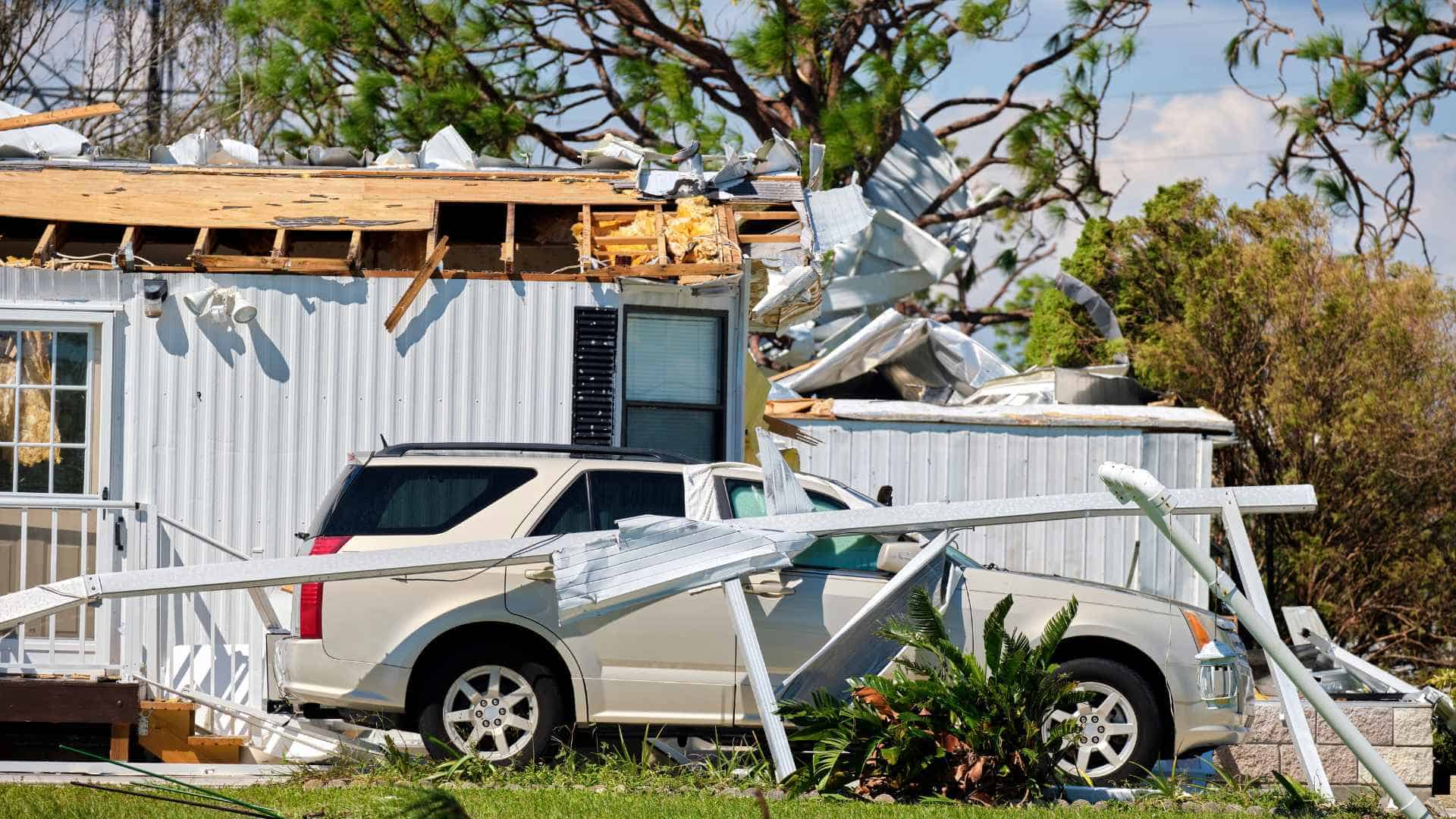
Yes, a hurricane can destroy your roof, especially if it is not properly constructed, maintained, or built to withstand high wind speeds. Hurricanes bring extreme wind forces, heavy rainfall, flying debris, and sometimes tornadoes, all of which can cause significant damage to a roof. The extent of the damage depends on several factors:
Factors Affecting Roof Damage in a Hurricane:
– Building codes in hurricane-prone areas often require roofs to be designed to withstand wind speeds of at least 120-150 mph, but older homes may not meet these standards.
Roof Type and Material
– Asphalt Shingles: These are common but can be easily blown off if they are not rated for high winds or are old and brittle. Shingles that are improperly installed or already damaged are particularly vulnerable.
– Metal Roofs: Metal roofs are more durable and have a higher wind resistance than shingles. However, if not properly installed, the panels can still be torn off or damaged.
– Tile or Slate Roofs: These materials are heavy and more resistant to high winds, but if they are not securely fastened, individual tiles or slates can be dislodged and become dangerous projectiles.
– Flat Roofs: Flat roofs are prone to damage from wind uplift, especially if the edges are not properly sealed or reinforced. The wind can get underneath the roofing membrane and peel it away.
Roof Age and Condition
– Older roofs are more susceptible to hurricane damage due to wear and tear, weakened materials, or outdated construction standards. Regular maintenance is crucial to ensure a roof remains strong enough to withstand hurricane-force winds.
Roof Design and Slope
– Roofs with complex designs, multiple gables, or low slopes are more vulnerable to wind damage compared to roofs with simple designs and steep slopes. Roofs with steeper slopes tend to deflect winds better, reducing the potential for wind uplift.
Roof Fastening and Attachment
– The way a roof is fastened and attached to the structure of the house greatly impacts its ability to withstand hurricanes. Roofs with weak or inadequate fasteners can easily be blown off by strong winds.
– Hurricane Straps and Clips: These metal connectors secure the roof to the walls of the house, helping to prevent the roof from being lifted off by high winds. Homes without these reinforcements are more likely to experience roof damage.
Debris Impact
– Flying debris, such as tree branches, outdoor furniture, or even parts of neighboring structures, can cause severe damage to a roof. Debris can puncture the roofing material, tear off shingles or tiles, or damage structural components.
Water Damage and Roof Leaks
– Heavy rainfall associated with hurricanes can lead to water damage, especially if the roof already has weak spots, cracks, or missing shingles. Water intrusion can cause significant structural damage, rot, and mold growth, which can compromise the integrity of the roof.
Tornadoes Within Hurricanes
– Hurricanes can spawn tornadoes, which can cause localized, catastrophic damage to roofs. Tornadoes can completely rip off roofs, collapse structures, or cause severe damage due to flying debris.
Ways to Protect Your Roof from Hurricanes:
Install Hurricane Straps or Clips: Reinforcing the roof-to-wall connections with metal straps or clips can significantly reduce the chances of your roof being blown off by strong winds.
Upgrade to Wind-Resistant Materials: Consider replacing your current roofing with materials designed to withstand high winds, such as metal roofing, high-wind-rated asphalt shingles, or impact-resistant tiles.
Secure Loose Items Around Your Home: Remove or secure items that could become airborne during a hurricane, such as patio furniture, potted plants, and grills, to prevent them from causing damage to your roof.
Trim Trees and Branches: Trim back any branches that hang over your roof to reduce the risk of them breaking off and damaging the roof during high winds.
Install a Secondary Water Barrier: A self-adhering, waterproof membrane installed under the shingles can provide an extra layer of protection against water infiltration if the outer roofing layer is damaged.
Check Your Insurance Coverage: Make sure your homeowner’s insurance policy covers hurricane damage, including roof repairs or replacement.


Sorry, the comment form is closed at this time.